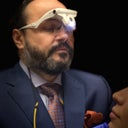Thank you for the important question; careful selection of plastic surgeon will be the most important decision you make.


